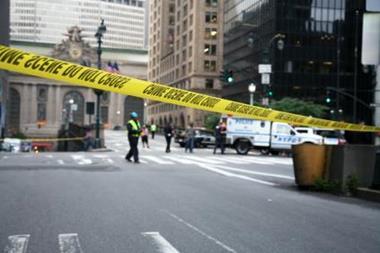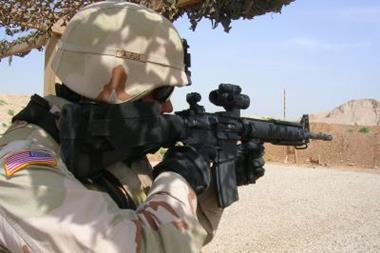The threat of terrorist attacks – both regional and global – is never far from the headlines. But it is an evolving picture that places ever-changing demands on the insurance sector
International terrorism is firmly back in the news, following al-Qaeda’s recent attempt to disguise bombs as printer cartridges and up to 13 parcel bombs being sent to European targets including German chancellor Angela Merkel and Italian prime minister Silvio Berlusconi.
Had the attacks been successful, public outrage would have no doubt outweighed any (re)insurance losses. Although the attacks were foiled, through a combination of intelligence and vigilance, the industry keeps a close eye on such events.
“There’s been quite a lot of growth in insurance demand, and incidents like these highlight the threat. From an underwriting perspective, it increases the level of due diligence, but it has not had an effect on rates,” says Aon Risk Solutions executive director of terrorism Neil Henderson.
It is not clear whether the cartridge bombs were intended to explode in the air or on the ground. But, says Risk Management Solutions (RMS) catastrophe specialist Dr Gordon Woo: “The attempted attacks on the cargo planes have been on the radar for a while. All the major cargo companies are doing a great deal to counter terrorism.
“What we are seeing with the changing targets is that it is very hard to hijack a plane because of the number of people you need. So the next best thing, from the terrorists’ point of view, is to bring it down.”
He adds: “From an insurance perspective, this would have been a huge aviation loss, but not a great property loss as it would have been unlikely to go off over a population centre.”
The printer cartridge campaign was the latest in a number of al-Qaeda plots that have emanated from Yemen and a group known as ‘al-Qaeda in the Arabian Peninsula’ (AQAP).
“Central al-Qaeda is still perceived as the epicentre of global terrorism, but when you look at recent attacks, such as Fort Hood or the underwear bomber on Christmas Day, it is AQAP that is behind them all,” Henderson says.
Aon says it does not believe AQAP has the capability to increase the frequency of its attempts but that it has the means to continue to “be creative and seek out weak security in pursuit of a spectacular attack”.
“There are ungoverned spaces in the tribal areas of Afghanistan, Pakistan and Yemen. The key problem in these areas is that any attempt at military action there will backfire and will only alienate the people you need on your side,” Dr Woo says.
According to RMS, the likelihood of a full-scale terrorist plot directly correlates with the number of operatives involved in the planning.
“The execution and frequency of successful large-scale attacks are crucially dependent on terrorist social networks,” Dr Woo says. “Too many terrorists can spoil the plot. One of the key aspects of the model is that, with the increase in surveillance, it is much harder for a large number of people to be effective.”
According to the RMS US terrorism model, the probability of a planned attack being foiled is twice as high for a cell size of three compared with a lone terrorist. If the cell has 10 operatives, the probability is as high as 95%.
However, Dr Woo acknowledges the pressure on the security services to counter these plots. “We are very much living in a world where the public expectation is of faultless security.”
The European parcel bombs were a reminder that al-Qaeda is not the only terrorist group out there, although it is possibly the only one with ambitions to strike globally rather than regionally.
The Greek parcels are believed to be the work of a far-left group, while the threat posed by the Real IRA was recently raised to Tier 1 level in the UK. Elsewhere, Columbian guerrilla group FARC is still active, while both the Philippines and Thailand have problems with militant Islamic separatist groups. “The links between terrorism and organised crime give cause for concern. In Mexico, there are areas that are becoming ungoverned spaces, with drug gangs running parts of the country,” Dr Woo says.
Al-Qaeda has long funded its operations with the proceeds from heroin production in Afghanistan, while its North African operation is heavily involved in drug running. FARC, meanwhile, derives its resources from cocaine.
The Bangkok effect
In 2010, the standalone terrorism insurance market was hit by a loss, put at $500m (£319m), from the riots in Bangkok in May. The loss hit the terrorism market, as policy wordings have afforded broader coverage in recent times.
“Coverage is constantly evolving. Insurers are listening to what clients want and need and adapting coverage to meet these needs,” Beazley political violence underwriter Kerri O’Dwyer says.
Generally speaking, she says, coverage is available for physical damage and business interruption as a result of the following perils:
• terrorism and sabotage;
• riots, strikes, civil commotion and malicious damage;
• insurrection, revolution and rebellion;
• mutiny and coup d’état; and
• war and civil war.
“In addition, liability coverages are available for terrorism liability cover and terrorism event cancellation cover,” O’Dwyer says.
Cover for nuclear, biological, chemical or radiological events is also available in the primary and reinsurance markets.
However, the Bangkok loss has not been enough to turn a softening market by hardening rates or reducing capacity. “The insurance market is liquid because the Bangkok claim did not affect it too much, so capacity is steady,” Henderson says.
“There continues to be demand for terrorism cover and capacity is at an all-time high,” says O’Dwyer, adding that new players regularly join the market, which has an estimated value of $4bn-$5bn.
“Pricing continues to be competitive due to large capacities available. However, recent losses in Thailand and Russia have had a flattening effect.”
“The price of terrorism insurance reflects the infrequency of major successful attacks, primarily because of authorities’ ability to interdict the operations of larger terrorist cells,” Dr Woo adds. “The take-up rate for terrorism insurance is higher today than it was in the first few years after September 11.”
According to Henderson, Aon is seeing growing interest for terrorism cover in countries such as Thailand, Pakistan and India, but says the UK has seen the strongest level of interest. International companies are recognising the value of cover.
“In the UK, there is a resurgent threat from the Real IRA terrorist group, but the danger they pose to the mainland is limited as they do not possess the resources the IRA used to have,” Dr Woo says. “In terms of reinsurance, they do not possess the sort threat that al-Qaeda groups do.”
Henderson says buyers of terrorism cover are becoming more sophisticated. Greater emphasis is being placed on risk assessments by ex-military or ex-police personnel.
“There’s been quite a big uplift of interest in that area. Instead of just buying insurance as part of their corporate governance strategy, companies are trying to understand more about what they are buying,” Henderson says.
One reason terrorism (re)insurance has remained affordable for buyers is state support, which is available in many western nations.
A Swiss Re spokesman says: “It is widely acknowledged that a public-private partnership approach is essential to guarantee sustainable and robust solutions. Governments’ main responsibility lies in the prevention and mitigation of terror attacks as well as in the definition of a suitable regulatory framework within which to operate.
“The insurance industry, on the other hand, manages the risk transfer and financial impact of such attacks up to certain limits, beyond which governments might need to step in again.”
Expiring legislation
One of the most important manifestations of this is the Terrorism Risk Insurance Act (TRIA), enacted in the USA following 9/11, which provides government-funded protection to the private reinsurance market.
TRIA is due to expire in its current form in 2014 and earlier this year insurance broker Marsh expressed its concerns over the possible non-renewal of the act.
In a statement, it said: “In the event that TRIA is discontinued and not replaced by a similar government-sponsored programme, Marsh anticipates the availability of terrorism insurance would be greatly reduced in high-risk areas, such as business districts in major metropolitan areas.
“Marsh also anticipates that pricing for terrorism insurance would dramatically increase in these high-risk areas. This would have a profoundly negative impact on those businesses with the greatest need for protection against terrorism risks.”
Others are more relaxed about the future of the programme. O’Dwyer says: “There is a school of thought that TRIA will not be extended beyond the current expiry date, due to Obama’s lack of support and the availability of cover in the open market.
“In reality, it will continue, as it is a cheap and efficient way of accessing terrorism cover and has the support of large insurance institutions.” IT





































No comments yet